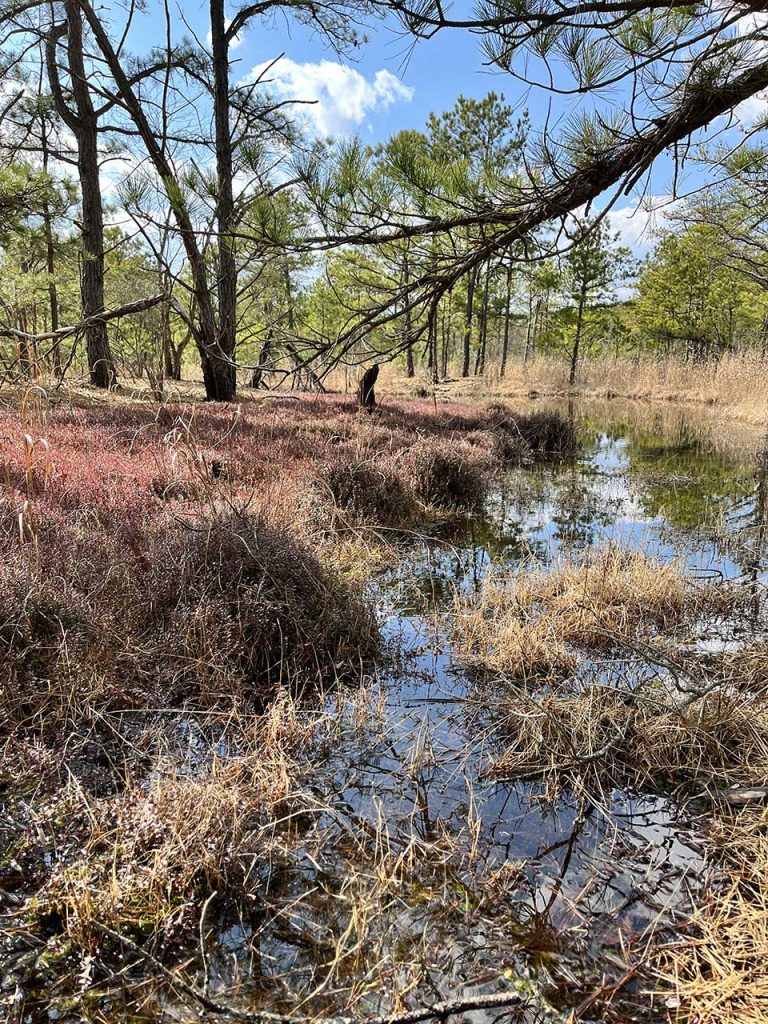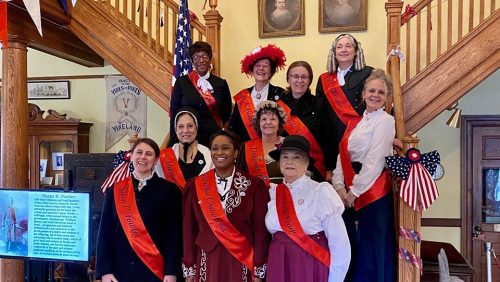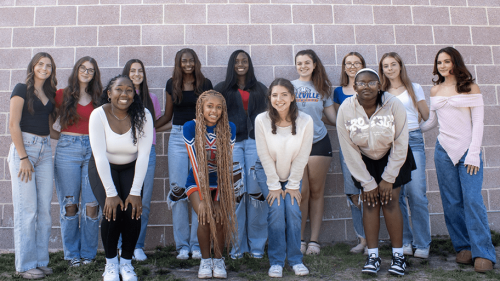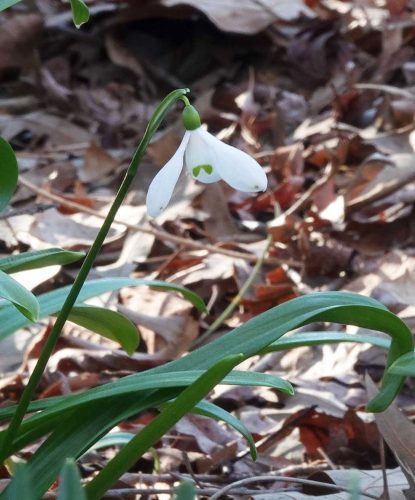
You may be familiar with Millville’s artist laureate Pat Vanaman Witt. She and I have known each other for nearly 50 years. Pat relays stories to me of growing up on a farm by the Maurice River, often describing her mother as saying, “Now Patsy…” It is because of these accounts that I have always called her Patsy myself.
About 10 years ago I visited the site of her family’s homestead. I found a silo and house foundation, all that remained of the long-gone structures. Investigating the basement’s perimeter I saw a number of clumps of daffodils near the block wall footing. I decided to take a shovel full and transplant them in my backyard where their heads could face the river, peering toward the east bank where Patsy once lived.
When I relayed my thievery to Pat she asked many questions about what I found on site. I told her that there were some old medicine bottles, remnants of the foundations, a few huge trees, and a great view of the river and the meadow.
A few years ago when the clump of daffodils multiplied into a larger patch I took some to Patsy at The Barn Studio, the art academy that has for many generations produced our region’s aspiring and accomplished artists of the Maurice River School.
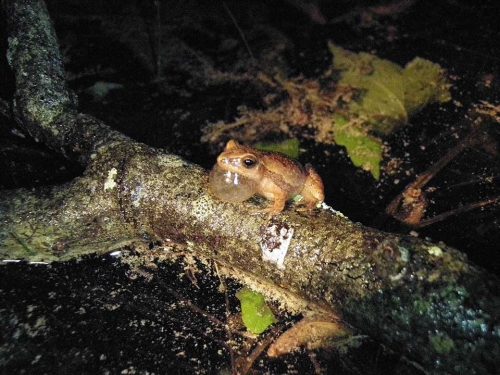
I imagine that when Pat sees those blossoms, even if it is only in her mind’s eye, she is reminded of her childhood on the Maurice. And when I see them in my yard I think of her relaying her mother’s, “Now Patsy,” and of the Barn’s garden.
I share this story because the plants in our yards often make us reflect on more important things than just their blossoms. They evoke memories and are linked to seasons and the passing of time. For me when the daffodils poke through the leaf matter—or sometimes snow—it symbolizes a resurgence of life, a tenacity to prevail and, most importantly, the arrival of spring. They tell me I have lived to see another rebirth—another start of a growing season.
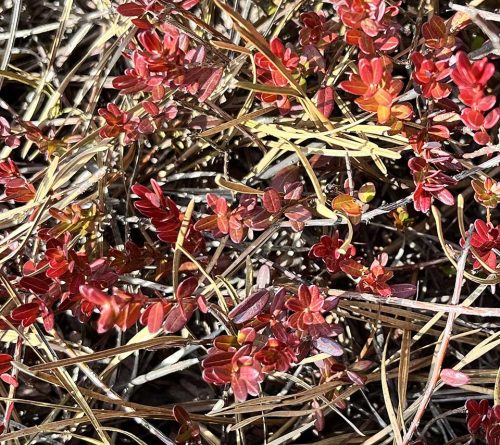
When their blooms unfurl it beckons me to begin listening for the early songs of chorus frogs and spring peepers. Wendy, one of our CU members, often does an all-call for an impromptu walk in the wilds of southern New Jersey, especially when the weather report is irresistibly fair. This past Sunday was one such occasion. Wendy sent a text: “2 pm at the Holly Orchard.” The day was beautifully sunny and unseasonably warm, in the 50s. Apparently few could resist such a tantalizing invitation, so about eight cars lined the entrance to the Menantico Ponds Wildlife Management Area’s Holly Orchard section on Route 49.
As we took off by foot, I suggested a small trail that leads to a series of ponds to the west of the entrance road. We walked a berm that is situated about 20 feet above a terrace beneath us. The varying levels are caused by the sand mining that took place on the property in the 1960s. The forest is typical of pine barrens—pitch and Virginia pines dotted the landscape. A number of ponds caused by a combination of mining and clay layers are evident. The clay acts like a pool liner creating random vernal ponds. Some are larger and are present year-round. But those that dry up for a portion of the year do not support fish, and therefore provide ideal nurseries for frogs.
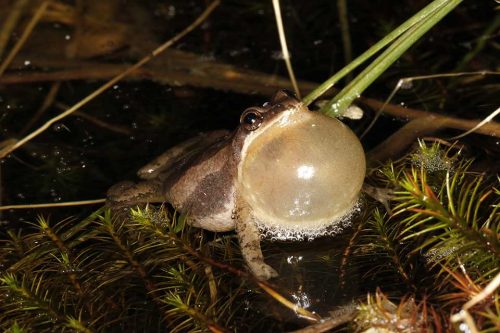
From the berm I could see a magenta carpet of vegetation. Small shiny leaves adorned single stems poking up through the straw-colored grassy vegetation that snaked its way through two ponds, making for a mosaic of colors. In younger days I would have bounded down the embankment, but today I just meandered over for a closer look. I wondered, “Wild cranberries?” And indeed they were cranberry plants that collectively made a sheen on the forest floor. I knelt down for a few snapshots.
As we neared the ponds the frog chorus was in full symphonic performance; it was deafening. Some walkers proclaimed, “They’re so loud!” We needed to approach quietly, for when they sense that something is getting close they fall silent. Frogs are blessed with keen hearing for identifying mates and avoiding predators.
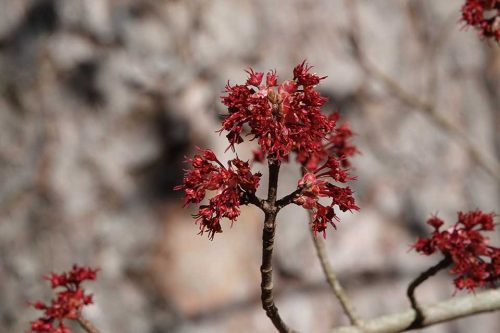
Through our binoculars we couldn’t see the entire frogs but we could see their vocal sacs inflating and relaxing along the surface edges of the pond. Their clamor put smiles on the faces of a half-dozen of us who decided to hummock-hop to the pond’s edge. Their sides inflate and then they transfer the air to their vocal sacs for singing, much like a bagpiper inflates his bag. I envision them in little kilts and I grin.
As I arrived back home I noted the young American beech trees holding on to last year’s coppery leaves, which will soon be shed and dropped to the ground by this year’s emergence. The red of the swamp maples is already giving a rich hue to the east bank where the Vanaman Farm once stood. I look down and see Patsy’s daffodils and think that living near the river is a privilege that I should not take lightly.

